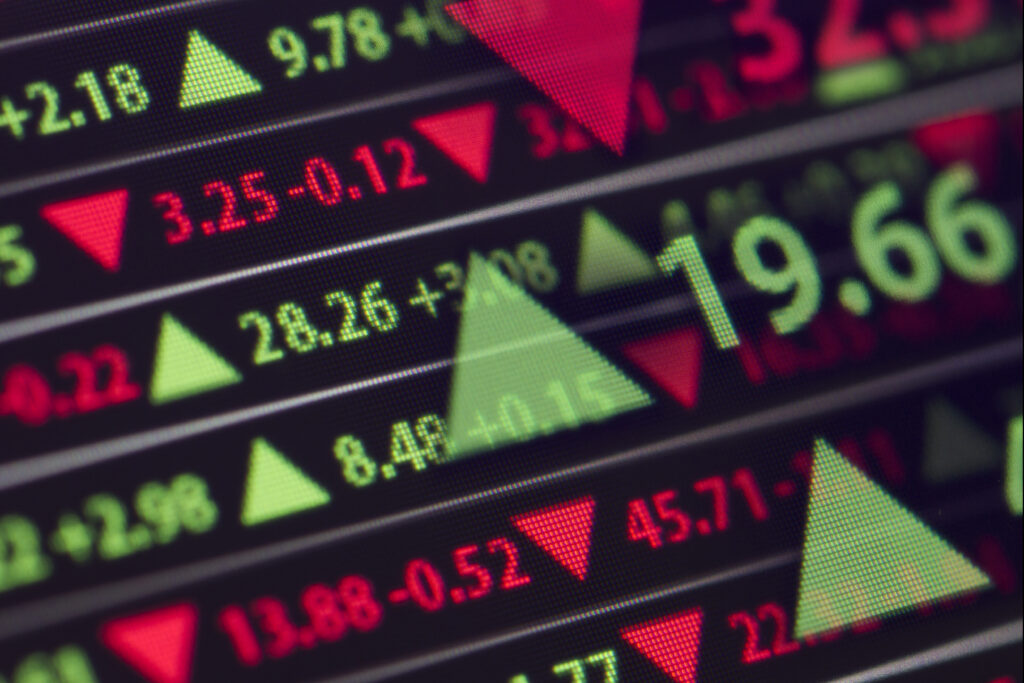Inflation rose and the stock market struggled in 2022 — concerns that other countries’ investment activity has reflected, according to Kevin DeMeritt, founder and chairman of Los Angeles-based gold and precious metals firm Lear Capital.
In the first half of the year, the S&P 500 dropped more than 20%, the Dow Jones Industrial Average declined more than 14%, and the Nasdaq fell more than 28%, with all three indexes eventually entering bear market territory — indicating they’d fallen more than 20% from their high point — by September 2022.
In the U.S., the government’s approach to currency production, which has involved printing $22 trillion in paper money since 2008 — including currency being created “at an unprecedented rate” during the COVID-19 pandemic, according to USA Today — likely contributed, Kevin DeMeritt says, to the recent uneven stock market performance.
“When you print that much money, it’s going to go somewhere,” the Lear Capital founder says. “Once something starts getting momentum, like the stock market, it just continually goes up. You get stock borrowing and leverage at incredibly high levels, and then the Fed starts raising interest rates. [People say,] ‘My debt costs me a little bit more; let me pull a little bit out of the stock market.’ That starts to bring it down. Then they raise [rates] a little bit more, and we’ve got to pull a little bit more money out until it’s a mad dash to get out of all the leverage— that’s what causes volatility.”
Focusing on Physical Resources
Inflation, too, posed challenges in 2022. A high demand for products occurred in tandem with ongoing supply chain issues — which, according to several financial industry experts, may have been due in part to higher airfreight costs and delayed delivery times caused by factors such as the continued conflict between Russia and Ukraine.
“The definition of inflation is too much money chasing too few goods,” Kevin DeMeritt says. “After COVID, we have a supply chain problem which caused the “too few goods” part of that equation to really cause prices to rise.”
Following the consumer price index for all urban consumers’ biggest one-month increase since 2012 in March 2021, the index rose to 9.1%, its highest point since 1981, in June 2022. As of November, the latest month data was released for, the index remained high at 7.1%.
The heftier costs of goods and services have potentially influenced investor interest in the stock market, Kevin DeMeritt says.
“It’s been a long time since we’ve had this kind of inflation,” he says. “We’re starting to see more and more people become concerned about higher interest rates and the volatility in the stock market — which happens when you have high inflation.”
Internationally, gold assets have garnered a growing amount of interest, compared to investment options like Treasury securities — which may have been attractive in the past to governments and private investors located outside of the U.S. partially because of the belief the U.S. government will make good on the terms, according to the nonpartisan Peter G. Peterson Foundation.
For example, China — which had previously been one of the largest foreign U.S. treasury securities holders — in 2022 decreased the amount of its U.S. debt-based holdings to less than $1 trillion for the first time in more than a decade..
“They’ve sold off U.S. treasuries,” Kevin DeMeritt says. “They’ve been replacing it with gold.”
China isn’t the only country to take a more precious metal-centric investment approach. Russia has reportedly increased its gold reserves by more than 1,900 tons since 2005 — and also reduced its U.S. Treasury-related holdings by 84%, more than $81 billion, between March and April last year.
“Russia has completely eliminated all of their reserves of U.S. treasuries,” Kevin DeMeritt says. “And what did they replace it with? Gold. They’ve doubled the amount of gold that they’ve held in reserve at their central bank. Because we’re printing up all this money, they believe holding a Treasury [security] that pays 3%, when inflation is 7%, just makes absolutely no sense.”
The Precious Metal Advantage
While elements such as inflation can theoretically affect paper currency’s value, the limited availability of physical precious metal assets — like gold — helps them retain their value, Kevin DeMeritt says.
“You can only mine so much gold per year,” he says. “We can print up as much money as the central bank wants; [with] every dollar you print, the paper money that’s already out there becomes worth less and less. So paper money is probably going to continue to fall, [as] it has for every nation for hundreds of years now, and the price of gold is probably going to continue to increase.”
Historically, gold has weathered inflationary increases fairly well. When inflation reached its 15% record high point in 1980, for instance, gold prices also soared — according to Lear Capital’s “The Double Play Opportunity” guide — to $850.
The global interest in gold could be something private investors may want to consider adopting. Incorporating physical precious metal assets into their portfolio through a self-directed individual retirement account might help offset erratic investment activity.
“Gold has an inverse relationship to stocks and other types of assets,” Kevin DeMeritt says. “The volatility of gold is not going to be the same as other asset classes; it’s going to give you the stability investors are looking for.”
To qualify for use in a self-directed physical precious metal asset-based IRA, gold, silver or platinum coins or bars need to have a certain fineness to them — for platinum bars and rounds, for example, the minimum amount is 0.995 — and they have to be held at an IRS-approved, insured private storage facility.
You can find out more about investing in physical precious metal assets through this examination of past and current gold prices — and Lear Capital’s portfolio comparison calculator, which illustrates how including precious metals in an investment plan could potentially impact the associated ROI.
“If you look at gold by itself, it’s dramatically outproduced the stock market,” Kevin DeMeritt says. “From the year 2000, if you invested $100,000 in stocks, it would be worth around $320,000 today. But if you invested $80,000 in stock and $20,000 in gold, it would be worth $385,000 today. You picked up an extra $65,000 in your bank account with just 20% of your assets diversified in gold.”







More Stories
Unlocking the Benefits of Group Health Insurance Plans
A Look Into Innovative Strategies for Scaling Small to Medium Businesses With Jason Miller
Insolvency Unpacked: Demystifying Liquidation, Administration, and Recovery